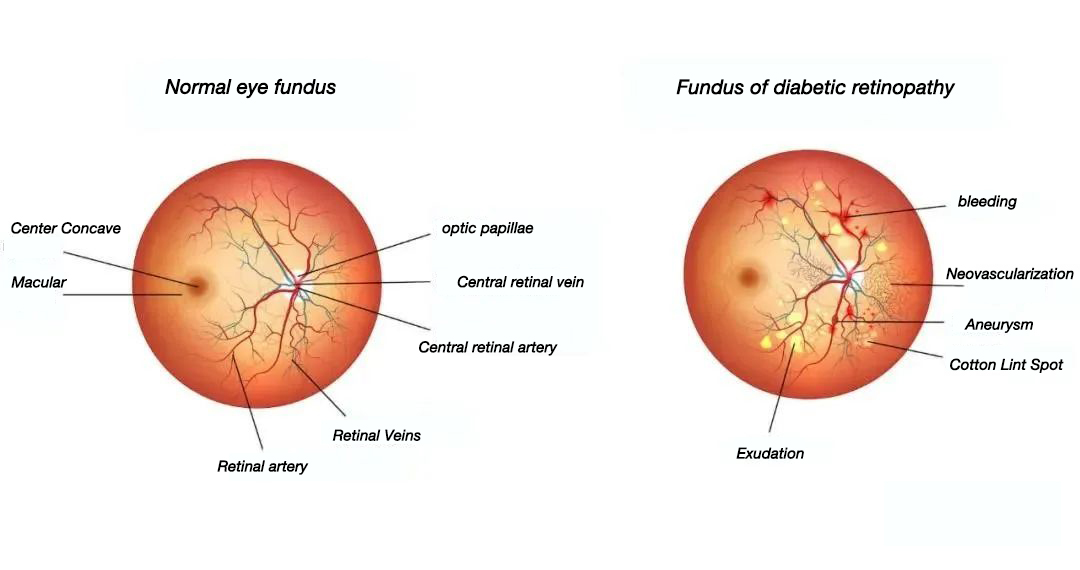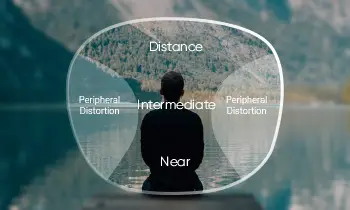Eye diseases ≠ Ophthalmic diseases. Nowadays, many eye diseases are closely related to systemic diseases, including hypertension, diabetes, rheumatic diseases, hereditary diseases, etc. However, most diseases can be prevented before they occur, and regular medical checkups and good lifestyle habits can keep you healthy!
The eye is the only organ in the human body that can be seen directly through simple instruments without surgical excision of the nerves and blood vessels. Many clinical systemic diseases have eye disease as the first symptom or sign or even eye disease as the primary manifestation. The following diseases are listed here for your reference.
High blood pressure - Vision thief with a large number of patients
Nearly half of the adults in the United States (47%, or 116 million) have hypertension. Hypertension is divided into two categories, of which those without a definite cause of elevated blood pressure are called primary hypertension, accounting for more than 95% of all hypertensive patients, and those with a definite cause are called secondary hypertension, accounting for less than 5% of the total.

Hypertension causes many terrible complications in the body, mainly because of the vascular pathology it causes. In addition to the well-known severe effects on the heart and cerebral vessels, it also causes eye pathology.
Primary hypertensive retinopathy is characterized by retinal artery constriction and even retinal and optic papillary lesions, such as retinal vein obstruction (commonly known as "eye stroke"), retinal artery obstruction, macular edema, and optic nerve edema. The pathogenesis of fundus lesions caused by secondary hypertension is the same as that of primary hypertension.
Fundus changes occur in approximately 70% of patients with hypertension. The extent of fundus lesions is closely related to the patient's age, duration of hypertension, and severity. Fundus hemorrhages, exudates, and other lesions will gradually improve as blood pressure decreases and is controlled.
Endocrine disease: the silent eye health killer
01 Diabetes
In the United States, the number one cause of blindness is diabetic retinopathy. Diabetic retinopathy is one of the most dangerous complications of diabetes.

Patients with diabetes have abnormally high blood sugar due to abnormal blood sugar metabolism. This hyperglycemic state can damage retinal blood vessels, leading to retinopathy. The retina, in turn, is the nerve tissue in the inner layer of the wall of the human eye and is an essential component in visual imaging. A large area of capillary occlusion and ischemia occurs when it is severely damaged, producing retinal neovascularization. Neovascularization is prone to rupture and bleeding, resulting in massive vitreous blood accumulation and mechanization, eventually leading to retinal detachment and loss of vision without timely treatment.
People with all types of diabetes are at risk for developing glycoplegia. And if not treated with timely intervention, it can lead to blindness.

However, 90% of "glucose reticulum" blindness can be avoided through early detection and intervention, and controlling hypertension, hyperlipidemia, and smoking cessation can reduce the incidence of glucose reticulum. In addition, one study found that one fundus exam per year in patients with type 2 diabetes reduced the risk of blindness by 94.4%. Therefore, patients with diabetes should undergo fundus screening even if they do not have any symptoms.
02 Hyperthyroidism
Thyroid-related ophthalmopathy is an organ-specific autoimmune disease closely related to abnormal thyroid function and is one of the most common extra-thyroidal manifestations of thyroid disease. Patients mainly present with receding eyelids, widened lid fissures, excessive protrusion of the eyeballs, skewed eye position, and even corneal ulceration and severe vision loss. It is very complex to treat and must be treated for dysfunctional thyroid disorders in addition to the eye consultation at the hospital.
Take hyperthyroidism eye protrusion as an example; people's eyes will show symptoms such as protrusion, tearing, photophobia, and vision loss, which cause considerable disturbance to people's life. The bulging eye often causes the eye not to close, so the patient's exposed cornea can easily cause severe symptoms of corneal ulcers. If the condition is delayed and not treated in time, hyperthyroidism proptosis can even cause the danger of blindness.
Eyes: the main window to rheumatic diseases
When you think of rheumatism, you usually think of joint pain, back pain, and generalized pain first. What people don't think of is that a variety of eye symptoms may also be associated with rheumatism.
For example, dry syndrome can cause dry eyes, and most people will think it is simply dry eyes, and the first visit may be to the ophthalmology department. 30% of people with spondyloarthritis will also have iritis as the first symptom. Systemic lupus erythematosus can manifest as retinal vasculitis, optic neuritis, chorioretinitis, and sclerosis.
Uveitis is most closely associated with rheumatic immune diseases. Uveitis is the most frequent ocular symptom in spondyloarthropathies (including seronegative spondyloarthropathies, ankylosing spondylitis, reactive arthritis, psoriatic arthritis, etc.) and pseudoarthrosis.
The uvea is the middle layer of the eye wall and is rich in blood vessels and pigments. Because of this, many diseases can affect the uvea through blood flow; lymphocytes accumulate in the uvea, which is the center of the eye's immune activity.
Uveitis is divided into anterior uveitis and posterior uveitis. Symptoms of anterior uveitis include decreased vision, photophobia and tearing, and eye pain and redness. Posterior uveitis usually presents with decreased visual acuity, distorted vision, floaters, and flashing lights. Severe posterior uveitis may result in retinal detachment and optic nerve atrophy as complications.
The eyes are the "barometer" of human health, and the above diseases are only some systemic diseases that can cause eye complications. Most diseases can be prevented, such as quitting smoking and avoiding mood swings to control high blood pressure, eating right and exercising correctly to prevent diabetes, and having regular medical checkups and good habits to stay healthy!





































